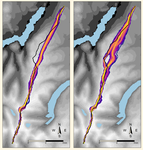
CRANDELL Otis
- Centro de Estudos e Pesquisas Arqueológicas, Universidade Federal do Paraná, Curitiba, Brazil
- Archaeometry, Europe, Geoarchaeology, Lithic technology, Neolithic, Raw materials, South America
- recommender, manager
Recommendations: 2
Reviews: 0
Recommendations: 2
Ran-thok and Ling-chhom: indigenous grinding stones of Shertukpen tribes of Arunachal Pradesh, India
An insight into traditional method of food production in India
Recommended by Otis Crandell based on reviews by Antony Borel, Atefeh Shekofteh, Andrea Squitieri, Birgül Ögüt, Atefe Shekofte and 1 anonymous reviewerThis paper [1] covers an interesting topic in that it presents through ethnography an insight into a traditional method of food production which is gradually declining in use. In addition to preserving traditional knowledge, the ethnographic study of grinding stones has the potential for showing how similar tools may have been used by people in the past, particularly from the same geographic region.
[1] Thongdok Norbu J., Nimasow Gibji, Nimasow Oyi D. (2021) Ran-thok and Ling-chhom: indigenous grinding stones of Shertukpen tribes of Arunachal Pradesh, India. Zenodo, 5118675, ver. 4 peer-reviewed and recommended by PCI Archaeo. doi: https://doi.org/10.5281/zenodo.5118675

Probabilistic Modelling using Monte Carlo Simulation for Incorporating Uncertainty in Least Cost Path Results: a Roman Road Case Study
A probabilistic method for Least Cost Path calculation.
Recommended by Otis Crandell based on reviews by Georges Abou Diwan and 1 anonymous reviewerThe paper entitled “Probabilistic Modelling using Monte Carlo Simulation for Incorporating Uncertainty in Least Cost Path Results: a Roman Road Case Study” [1] submitted by J. Lewis presents an innovative approach to applying Least Cost Path (LCP) analysis to incorporate uncertainty of the Digital Elevation Model used as the topographic surface on which the path is calculated.
The proposition of using Monte Carlo simulations to produce numerous LCP, each with a slightly different DEM included in the error range of the model, allows one to strengthen the method by proposing a probabilistic LCP rather than a single and arbitrary one which does not take into account the uncertainty of the topographic reconstruction. This new method is integrated in the R package leastcostpath [2].
The author tests the method using a Roman road built along a ridge in Cumbria, England. The integration of the uncertainty of the DEM, thanks to Monte Carlo simulations, shows that two paths could have the same probability to be the real LCP. One of them is indeed the path that the Roman road took. In particular, it is one of two possibilities of LCP in the south to north direction.
This new probabilistic method therefore strengthens the reconstruction of past pathways, while also allowing new hypotheses to be tested, and, in this case study, to suggest that the northern part of the Roman road’s location was selected to help the northward movements.
[1] Lewis, J., 2020. Probabilistic Modelling using Monte Carlo Simulation for Incorporating Uncertainty in Least Cost Path Results: a Roman Road Case Study. SocArXiv, mxas2, ver 17 peer-reviewed and recommended by PCI Archaeology, 10.31235/osf.io/mxas2.
[2] Lewis, J., 2020. leastcostpath: Modelling Pathways and Movement Potential Within a Landscape. R package. Version 1.7.4.